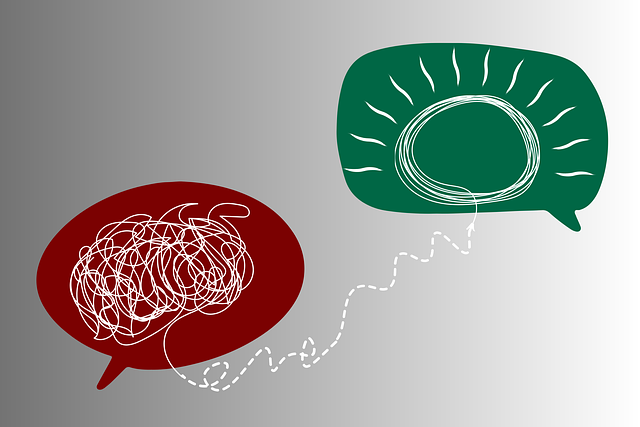Public awareness campaigns for Boulder Couples Communication Issues Therapy utilize media and community partnerships to dispel myths, reduce stigma, and promote professional mental healthcare. Targeting specific demographics with tailored messages, these campaigns foster cultural sensitivity and resilience through accessible information on stress management and relationship improvement strategies. Leveraging storytelling, workshops, and digital platforms, they encourage proactive engagement in mental well-being, measurable through KPIs including message reach, engagement, and event attendance, with pre-post surveys assessing behavioral changes.
Public awareness campaigns play a pivotal role in shaping societal attitudes and behaviors. This article delves into the intricate process of designing and implementing effective campaigns, focusing on key strategies such as understanding target audiences, crafting compelling messages, and selecting appropriate media channels.
From traditional methods to digital innovations, we explore how to engage the public and measure campaign success. Specifically, we discuss the relevance of these techniques in addressing sensitive issues like Boulder couples’ communication issues and therapy accessibility.
- Understanding Public Awareness Campaigns: Their Role and Impact
- Identifying Target Audiences for Effective Communication
- Crafting Compelling Messages: Strategies for Engaging the Public
- Choosing the Right Channels: Traditional vs Digital Media
- Measuring Success: Evaluation Metrics for Awareness Campaigns
Understanding Public Awareness Campaigns: Their Role and Impact

Public awareness campaigns play a pivotal role in educating and engaging communities on various social, health, and environmental issues. These initiatives aim to foster positive change by raising understanding and encouraging collective action. In the context of Boulder Couples Communication Issues Therapy, for instance, targeted campaigns can help dispel myths surrounding therapy, reduce stigma, and promote the benefits of seeking professional help. By using accessible media like social media, community events, or local partnerships, these campaigns reach a wide audience, potentially impacting individuals’ decisions to prioritize their mental well-being.
The impact of awareness campaigns extends beyond immediate behavior changes; they contribute to long-term cultural shifts. Encouraging positive thinking and stress management strategies, as often seen in such initiatives, can enhance resilience among community members. Moreover, integrating cultural sensitivity in mental healthcare practice, a key aspect these campaigns may address, ensures that services are inclusive and adaptable to diverse needs. This not only improves therapy outcomes but also fosters trust and accessibility, creating a more supportive environment for all individuals seeking help.
Identifying Target Audiences for Effective Communication

Identifying target audiences is a crucial step in designing effective public awareness campaigns. When it comes to addressing sensitive topics like communication issues within Boulder couples, tailoring messages for specific demographics ensures the information resonates with those who need it most. For instance, a campaign aimed at fostering healthier relationships might focus on young adults navigating their first few years of marriage or long-term partners facing challenges in maintaining connection.
Understanding the unique struggles and needs of these groups is essential. Boulder couples experiencing communication difficulties may benefit from therapy services, while also leveraging community outreach programs to raise awareness about building resilience in relationships. A well-executed public awareness campaign should consider a risk assessment for mental health professionals, ensuring their messages are both informative and supportive.
Crafting Compelling Messages: Strategies for Engaging the Public

Crafting compelling messages is an art that forms the backbone of any successful public awareness campaign. When it comes to addressing sensitive topics like Boulder couples communication issues and therapy, engaging the public requires a strategic approach. One effective strategy involves storytelling, where real-life examples or case studies can illustrate the impact of ineffective communication and the benefits of seeking help. By humanizing these challenges, the message resonates on a deeper level.
Incorporating practical solutions like Stress Management Workshops Organization, Mindfulness Meditation, and Empathy Building Strategies into the campaign further enhances its appeal. These strategies not only empower individuals to take proactive steps but also show that there are accessible tools to improve their relationships and overall well-being. A balanced mix of emotional connection and actionable advice ensures the public feels both understood and motivated to engage with the campaign’s goals.
Choosing the Right Channels: Traditional vs Digital Media

In today’s digital age, navigating public awareness campaigns requires a strategic approach to channel selection. When it comes to sensitive topics like Boulder couples communication issues and therapy, choosing the right medium is key to reaching and engaging the intended audience. Traditional media, such as print publications and local radio shows, still hold value for targeted demographics. However, for broader awareness and faster dissemination, digital channels prove indispensable. Online platforms offer unparalleled reach and the ability to cater content specifically to diverse audiences, addressing issues like depression prevention and stress management workshops organization effectively.
While traditional media ensures a certain level of credibility and trustworthiness, digital platforms allow for real-time interaction and feedback. This is particularly beneficial in promoting self-care practices and mental health initiatives. By leveraging both traditional and digital media, organizations can create a multi-faceted campaign that amplifies messages, fosters open dialogue, and ultimately encourages couples to seek help when facing communication issues. Such an integrated approach ensures that the right people, especially those who might be hesitant to engage with therapy, receive the support they need.
Measuring Success: Evaluation Metrics for Awareness Campaigns

Measuring success is a vital aspect of any public awareness campaign, ensuring that efforts translate into tangible outcomes and positive behavior change. For campaigns focused on sensitive issues like Boulder Couples Communication Issues Therapy, evaluation metrics must be carefully chosen to capture both immediate impact and long-term sustainability.
Key performance indicators (KPIs) should include the reach and engagement of campaign messages, such as website traffic, social media interactions, and event attendance. Additionally, tracking pre- and post-campaign surveys can gauge shifts in awareness, knowledge, and attitudes related to stress management and self-esteem improvement. For instance, a Community Outreach Program Implementation could measure success by comparing the number of individuals seeking therapy or counseling services before and after the campaign. These quantitative measures, combined with qualitative feedback from participants and stakeholders, provide a comprehensive evaluation of campaign effectiveness.
Public awareness campaigns play a pivotal role in educating and engaging communities, addressing critical issues such as Boulder couples’ communication problems. By understanding target audiences, crafting compelling messages, and utilizing both traditional and digital media channels effectively, these campaigns can significantly impact behavioral changes. Measuring success through appropriate evaluation metrics ensures that efforts are not only reaching the intended audience but also making a tangible difference, ultimately fostering healthier relationships, like those in therapy for communication issues among Boulder couples.














